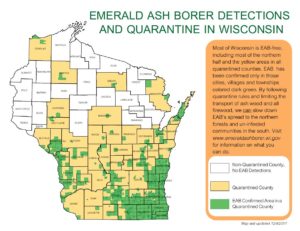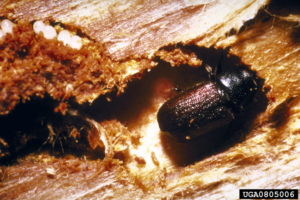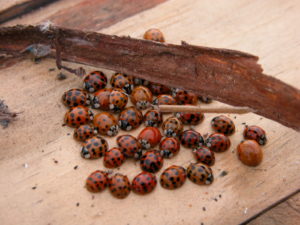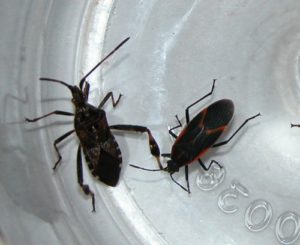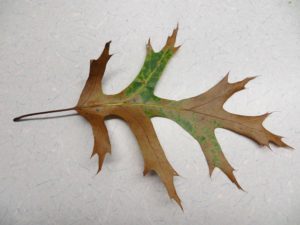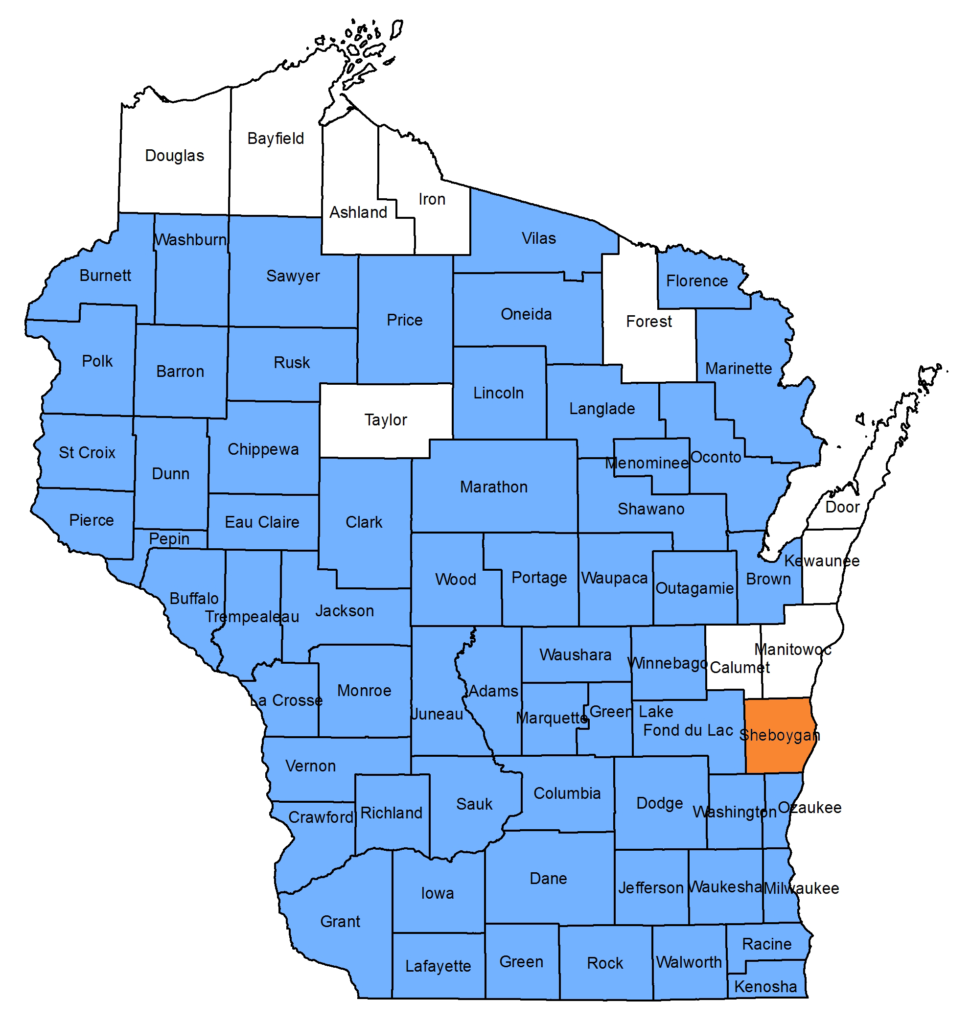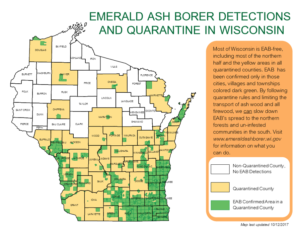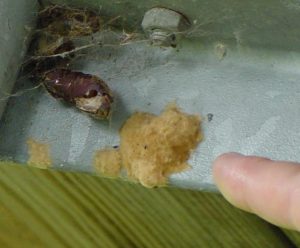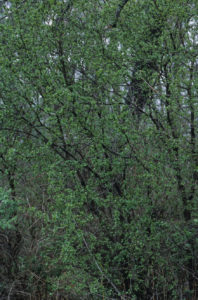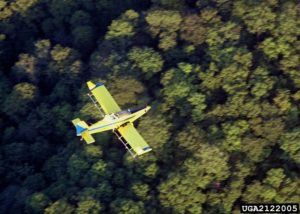
Aerial spraying for control of gypsy moths. Photo: John Ghent, bugwood.org
The WI DNR is proposing to deactivate the gypsy moth suppression program as requests for treatment have fallen to very low levels and this small need can be met by private businesses. The DNR is taking input on the proposed change to rule NR 47.910. If you have questions, concerns, or comments about this proposal you may give your input by attending a hearing or in writing. Input must be received on or before Tuesday, Dec. 19, 2017 to be considered.
Public hearings will be held on Dec. 19, at 11:00 a.m. at DNR service centers in Fitchburg, Milwaukee, Green Bay and Eau Claire. Input may be given verbally or in writing at the hearing.
Written comments may be submitted by U.S. mail, e-mail, or through the internet. Written comments will have the same weight and effect as oral statements presented at the public hearing.
E-mail comments may be made at: DNRAdministrativeRulesComments@wisconsin.gov (Please include “Attn: Andrea Diss-Torrance” in subject line.)
Written comments and any questions on the proposed rules should be submitted to:
Department of Natural Resources
Attn: Andrea Diss-Torrance
P.O. Box 7921
Madison, WI 53707-7921
Written by: Andrea Diss-Torrance, invasive forest insects program coordinator, Madison. Andrea.DissTorrance@wisconsin.gov; 608-264-9247

